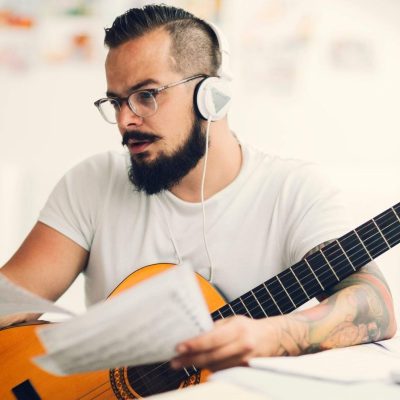https://nasacademy.com/blog/article/what-is-the-creator-economy
The COVID-19 pandemic showed us that people want better work/life balances, and the creator economy makes that possible.
Whether through social media content creation, photography, writing or creating music, a new definition of ‘work’ is emerging – and it’s the newest example of the 4-day work-week. So what is it really? And what are the opportunities for you in the space?
Check out Nas Academy and join the growing creator economy today!
The creator economy is where normal, everyday people get to create their own projects, businesses and art, share them on the internet – and actually make a living doing it.

Some interesting examples of creators who created multi-million dollar businesses are:
The creator economy was more or less brought on by the free market of the “Gig Economy”, where people mainly make their money through short-term jobs; also called ‘gigs’. This year alone, the Gig Economy has grown 17.4%. That’s an economy worth 350 billion US dollars.
Gig economy jobs could look like flipping houses, coaching classes, freelancing a short-term project, consulting for a business, drop-shipping products, tutoring math to high school students, speaking events, or being a content creator on social media.

While the gig economy makes up the foundation of the creator economy, it wouldn’t exist without the very thing we all have in our pockets: mobile phones.
Phones have cameras, and social media apps that let anyone and everyone become a content creator – it equalizes the playing field! This means that if you have access to a phone, you have the ability to join the creator economy
But while everyone has a phone, it can be difficult to learn how to create content with it. There are so many new platforms constantly popping up, and it’s difficult to keep up with what’s happening in the creator space.
On top of this, all of the ‘viral’ trends on social media make it hard to keep track of how you can get your content to perform well.
If you’re interested in learning more about how you can use your phone to create content, check out our 5-month course: Creator Accelerator Program.
With the growing popularity of the creator economy, everything is shifting with it – especially with ownership and monetization options for creators. With this growing economy, creators are starting to get more and more ownership over content and get monetization options.
But one of the primary ways this is happening is because of blockchain technology.
Through blockchain technology, creators are able to track their content’s ownership. How? The blockchain is a digital ledger that works to record all transactions and tracking of assets on the blockchain network. This means that if you store your work on the Blockchain, it can perfectly track the entire history of ownership for the asset.
So why is this relevant for creators? Because it gives them the rightful ownership they deserve for all the content they are producing and sharing online.
Ever since the Covid-19 pandemic hit, people, like you, have realized they want more flexibility in their jobs. Since this realization, the resignation rates worldwide have skyrocketed as people quit to look for better alternatives, alternatives like content creation.
Content creation is not just a path that millennials and current job-holders are considering. A recent study found that content creation is the dream job for the next generation of the labor force. In the USA and UK alone, 30% of Gen Z named YouTuber/Vlogger as the number one thing they want to be when they grow up.
This is proof that the creator economy is growing!

And it’s proof that this economy’s market size and value is expected to skyrocket.
If you are a business, you should be thinking about how to leverage content creators to market your business and be thinking about how to create a business around supporting content creators. If you need help getting started, check out the work that we do at Nas Academy Communities.
Creators are the people who are creating content and putting it out for the world to see. These creators could be creating anything, from music, artist, photography, videos, social media posts, NFT tokens, blogs, podcasts to books. Below are a few categories and example of creators killing it in those categories:
Before the internet, being a creator was hard. After all, it was hard because gatekeepers ruled the stages.
Actors and musicians needed agents.
Books and magazine authors needed a publishing house.
Photographers or painters needed art galleries.
If these agents, publishing houses or art galleries didn’t like the creator’s work, the creator wouldn’t get the job. If these gatekeepers thought the creator’s work was not what people wanted and that it wouldn’t sell, then that creator would never get a chance at success.
This system made it so that many creators were constantly facing rejection, with very little chance to succeed in a creative career. Not to mention, even those creators lucky enough to make it past the gatekeeper, they would barely get paid for their work. It was often not enough to make a living off of. That was until…

The internet changed everything. There were no more gatekeepers. No more “no’s”.
If creators wanted to create, now they could.
Creators could create the content that they wanted to create, deliver it directly to their niche audience and have millions of people decide if their content was good enough – rather than one single privileged network.
The internet also showed that gatekeepers did not know what people wanted.
For the first time in history, the rise of the internet allowed creators to go right to the people by giving them a platform and a voice.
But it came at a cost….
In the earlier days of the internet, also known as Web2, ownership of everything on the web was held by big tech companies like Facebook,Instagram or Google.
This meant that creators would pour their heart and soul into social media platforms, working to gain a following and create valuable communities only to realize they actually owned none of it.
The creators were often working for free, or for very little money, while the platforms made all the big bucks. In fact, creators couldn’t even guarantee their account’s existence. It could get hacked at any moment. Or a social media platform could cancel their account whenever they felt like it – without notice.
Clearly…this was a big problem.
Today, the internet is changing. And it’s changing the creator economy for the better.
New platforms are empowering creators instead of exploiting them. These platforms allow for creators to do work that matters to them without the need to focus on just ad revenue or branded partnerships.
Instead of needing millions of likes and followers, creators can now earn a living with a small and dedicated audience. How? Through new monetization options that platforms are starting to offer creators. Instead of working through a social media platform or brand partner, creators can now sell straight to the end-user.

Some new ways that creators are able to monetize are:
The future generation wants a bigger, better creator economy. The next generation sees the value of the creator economy and the Gen Zers are ready to become creators themselves.. They want a creator economy where creators worldwide are paid fairly for their work and get rightful ownership over their content .
With exciting technologies like Web3, Blockchain, NFTs and Cryptocurrency, the monetization routes creators have are growing in impact and reach. With more social media platforms understanding the need for creator monetization and ownership, they are leading the change, and working side-by-side with creators.
The Creator economy is the future and we are ready to invest. Are you?
5 years ago, the world had 5 million social media creators. Today, that number is over 50 million.
Welcome to the Creator Revolution. Now, for the first time ever, you can actually get a job doing what you love.
You can be a social media manager, a digital marketer on TikTok, or a community manager on Discord. Not only are these the world’s newest jobs, they are guaranteed to be in-demand in future. And they are way more fun than your average 9 to 5, and pay even better! But there hasn’t been one single place to learn all these skills. Until now.
This is the Creator Accelerator Program. We designed this program to help you skyrocket your career as a creator. From learning how to grow on social media platforms, to building a network and accessing job opportunities with the world’s top brands – this immersive program will transform your career in just 5 months.
There’s room for everyone in this Revolution, but don’t waste another day — the Fall Semester starts soon!
By Admin Nas Academy